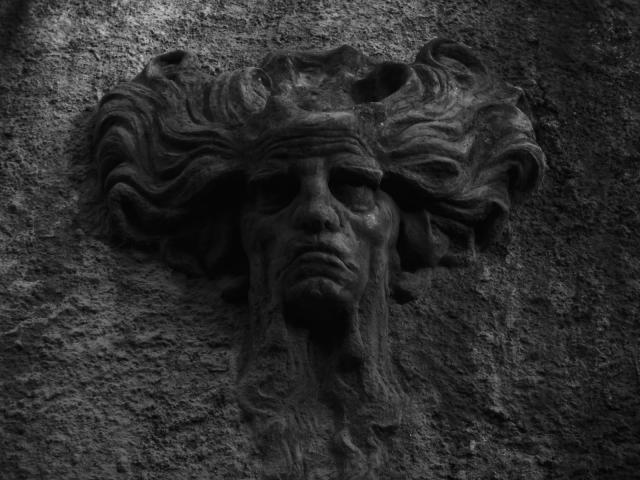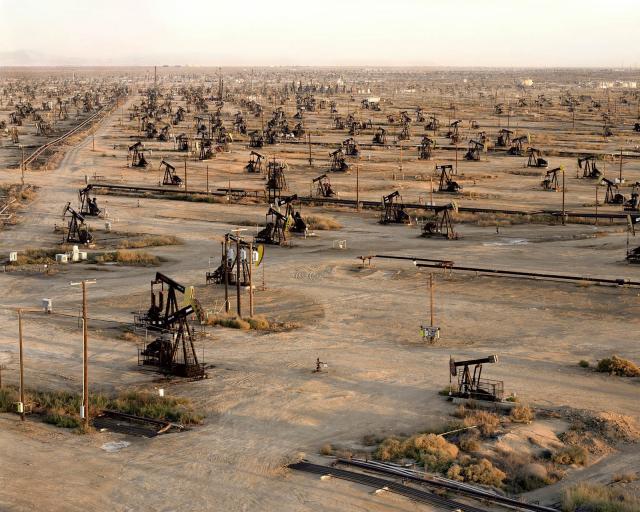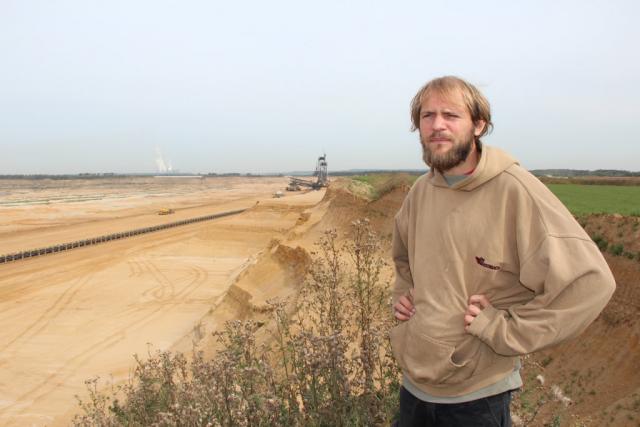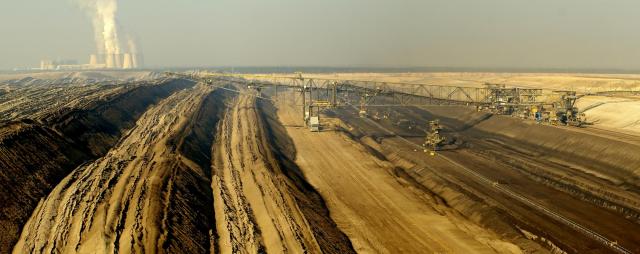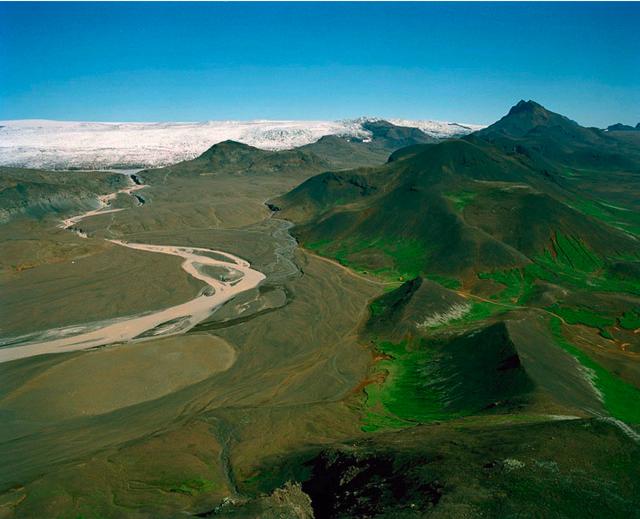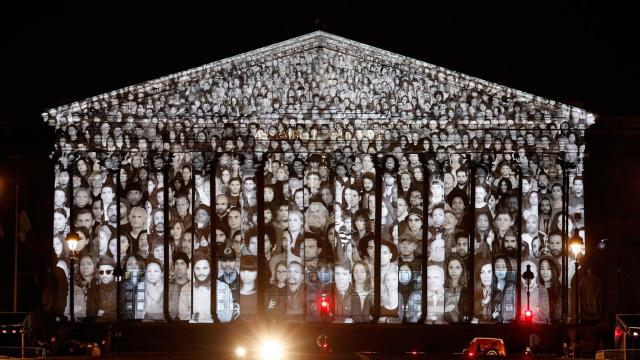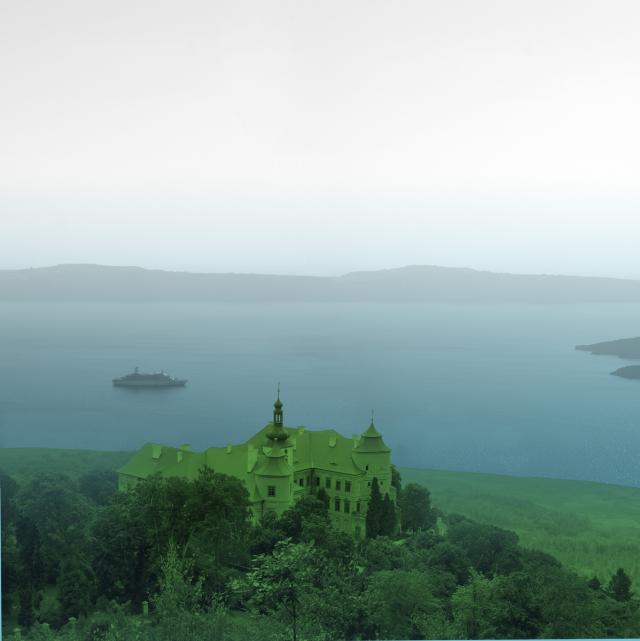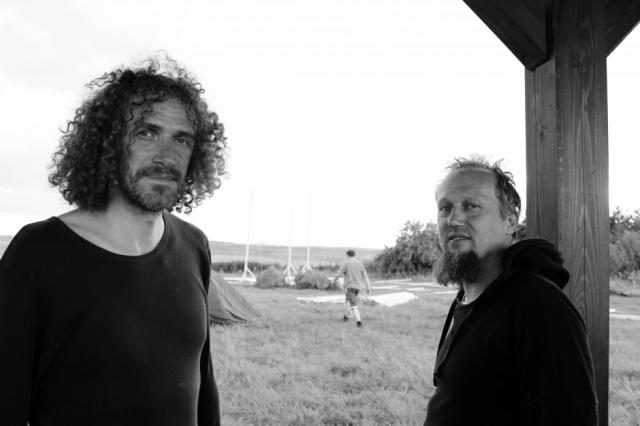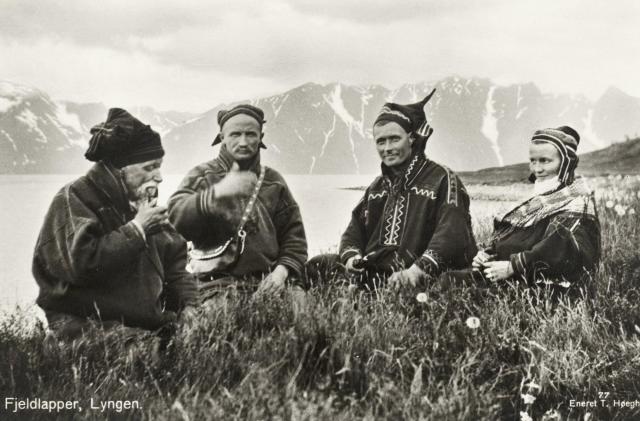Symposium Program
Program and abstracts
Location: French Institut Prague, Štěpánská 35 Praha 1
Invited guests and participants: Guy van Belle /BEL/CZ/, Vít Bohal, Dustin Breitling /USA/, Peter Cusack /GBR/, Petr Gibas, András Heszky/HUN/(Translocal Institute), Stanislav Komárek, Alena Kotzmannová, Julia Martin, Pavel Mrkus, Ivo Přikryl, Martin Říha, Ivar Smedstad, Matěj Spurný, Tereza Stöckelová, Martin Škabraha, John Jordan /FRA/GB/ a Isabelle Frémeaux /FRA/GB/ (The Laboratory of Insurrectionary Imagination).
Info and organisation: Miloš Vojtěchovský, Dagmar Šubrtová, Dustin Breitling.
Email: info@frontiers-of-solitude.org.
This event takes place at and is organized in collaboration with the French Institute in Prague and with the support of the Agosto Foundation.
Friday 5 February
10:00 Registration
10:30 Miloš Vojtěchovský and Dagmar Šubrtová - Welcome and introduction
Reports Beyond the Frontiers
The first block of presentations consists of the outcomes from the expeditions to Iceland, north Bohemia and FInnmark during late summer of last year as part of the project. Participants will talk about their experiences and thoughts about the journeys. Alena Kotzmanová and Ivar Smedstad will present the Finnmark expedition, Julia Martin and Pavel Mrkus wlll talk about the landscape and industry in Iceland, and Peter Cusack, workshop lecturer for Into the Abyss of Lignite Clouds at the Most coal fields, will speak about his ongoing research into the sonic aspects of environmentaly damaged places and landcapes.
10:45 Alena Kotzmannová - Up to the North
11:00 Ivar Smedstad - Finnmark
11:30 Julia Martin -The Iceland expedition - Tracing hyperextended objects
12:00 Pavel Mrkus - Genesis of the "Fall"
12:15 Peter Cusack - Sonic Journalism and Places in Transformation
12:45 Discussion
13:00 -14.00 Lunch brake
Landscapes, Gardens, Mines, Dwellings, Voids
The afternoon block covers different aspects of current environmental issues, and in particular, there will be presented a case study of the industrial landscape around the Most basin in north Bohemia.
14:00 Stanislav Komárek – Having a Land, Having a Garden
14:30 Martin Říha - The Limits of the Adaptation-The Men and Ore Mountains Landscape
15:00 Ivo Přikryl - Hydrological System of Landscape after Mining - Ideal and Reality
15:30 Matěj Spurný - “We didn’t have the Numbers” The Dawn of Criticism of Socialist Productivism in North Bohemia in the 1960s as a Case Study
16:00 Petr Gibas - Voids: The Landscape between presence and absence
16:30 Discussion
17:00-19:00 Break
19:15 Screening of Dreamland with intro
Saturday 6 February: Anthropo-Scenes
The morning block focuses on the broader contexts of the industrial and post-industrial landscape, related to the current discourse on the Anthropocene.
11:00 Martin Škabraha - Reclaiming the Landscape
11:30 Dustin Breitling - Cognitive Mapping
12:00 Tereza Stöckelová - Ontological Uncertainty in the Planetary Lab
12:30 Vít Bohal - The Anthropocene: The Good, the Bad, and the Ugly
Lunch break - 13:00 - 14:00
Places in Between
In the last block, presentations will offer three examples of how contemporary art and artists reflect the environmental crisis, and the questions of their vision of the future with the closing discussion panel.
14:30 Guy van Belle - An Ecological Awareness, Crossing Borders between the Real and Imagined?
15:00 Andras Heszky (Translocal institute, Budapest) - River Ecologies
15.30 Isabelle Frémeaux/John Jordan (The Laboratory of Insurrectionary Imagination) - Places in Between
16:15-16:45 Pannel Discussion and open stage
17:00-19:00 Break
19:00 Screening of The Forgotten Space. (Allan Sekula and Noel Burch)
Abstracts
Guy van Belle: An Ecological Awareness: Crossing Borders Between the Real and Imagined?
We live in a world increasingly dissatisfied with our persistence, even to the point of questioning our survival. On one hand we see an economics-driven reduction of state involvement in the well-being of its citizens, combined with a political and cultural traditionalism, economic protectionism, and a new xenophobia, which unify ideological contradictions in support for the imagined strongest. Solutions for making a new society are demanded from an abstract class with very little involvement in the real issues, who make top-down decisions so that any changes implemented harm no one. The climate conferences are an example of this. Conversely, alternative solutions on the level of every day life have arisen, worked out by small communities with specific needs. They have provided ad-hoc solutions, which they continue to develop and maintain from the bottom up. This implies that one size does not fit all, and we need fundamental change, even if it hurts, until we acquire better habits. It also suggests a completely different situation for culture and art, abandoning the system of museums, collectors and galleries, and redefining the means of a new creativity, to foster new living conditions. Are we spiders and bees, or architects?
Guy van Belle /BEL/CZ/ (a.k.a. Gívan Belá) is a media artist and curator living in the Czech Republic. On occasion he introduces himself as a media data author, at other times as a wind time inventor and clockmaker, then later as a slide and cigar box guitar musician in a skiffle/spasm band. After studying literature and linguistics, philosophy and sculpting, he switched to computer music at the end of the 1980s. His most important virtual (collective) organisations have been Stellingname (1984-1989), Young Farmers Claim Future (1990-2000), dBONANZAh! (1998-2002), mXHz.org (2002-?) and the Society of Algorithm (2004-?).
Dustin Breitling: Cognitive Mapping
How do conceptions of territory, land, boundaries, and space change with the emergence of computational tools? Fundamentally, my focus will be to inquire into the role of an array of technologies and how they render novel capabilities of diagramming, spatialising, and designing. In particular, how technologies are employed through the likes of Simultaneous Location and Mapping in Real Time, defined as “the process of creating a map using a robot or unmanned vehicle” that navigates the environment while using the map it generates. Ultimately, my endeavor becomes to investigate these technological affordances and their relationship between orientation and Frederic Jameson’s invocation of a New Aesthetic related to Cognitive Mapping. Jameson’s characterization of a stark disjunction between a phenomenological experience of an individual subject and the apprehension of a global and social totality raises questions as to how to recuperate tools for navigation, and opens a framework for understanding space and its relationship to totalities topologically and importantly dynamic.
Dustin Breitling (USA) is an M.A. Student at Charles University studying Geopolitics. He organizes the Diffractions lecture series and is interested in Accelerationism and Computation.
Vít Bohal: The Anthropocene: The Good, the Bad, and the Ugly
The contemporary discourse centered around the signifier Anthropocene is in flux, but it is possible to identify some centers of gravity for navigating this newfound semiotic terrain. The first question pertains to the relationship of raw data, manifested in discreet measurements, figures and patterns, as opposed to the functional and narrative context of its interpretation. This gap is bridged by the writers which Slavoj Žižek calls the “Third culture” (Dawkins, Dennet, Sagan, Lovelock, et al.) So, how is the raw data pertaining to contemporary discourse on climate change inscribed in the language of social criticism and ecology? There is the (slightly farcical but all-the-more telling) discussion on the “good, the bad and the ugly” aspects of the Anthropocene, which manages to draw a more navigable cognitive platform with which to address some of the fundamental issues in the wider discourse on anthropogenic climate change. Finally, the presentation will conclude with a look at some of the outputs of the debate as put forth in the work of McKenzie Wark, where he poses a direct challenge to the Western paradigm of the subject/object, human/nature split, and announces, in the words of Žižek,“the death of the Goddess.”
Vít Bohal is a member of the Diffractions collective, which is focused on accelerationism, posthumanism, Prometheanism, and strands of critical theory. He publishes and translates texts on various topics, usually dealing with culture and philosophy. His articles have appeared in VLAK, VICE, Creator's Project, A2, and Word Addict. He studied music at Charles University and majored in Critical and Cultural Theory.
Peter Cusack: Sonic Journalism and Places in Transformation
Sonic journalism asks the question, “What do we learn of places by hearing their sounds?” and is based on the idea that valuable information about places and events is revealed by the way they sound and that careful listening will give insights different from, but complimentary to, visual images and language. The talk will use examples from the lignite mining areas of North Bohemia and Germany to discuss the sonic consequences of the landscape transformations due to the major industrialisation of these areas.
Peter Cusack is a field recordist and musician with a special interest in environmental sound and acoustic ecology. His projects have included community arts, research into sound and our sense of place, and documentary recordings in areas of special sonic interest (Lake Bajkal, Aral Sea, the Chernobyl exclusion zone, the Caspian oil fields, or UK nuclear sites). The project Sounds From Dangerous Places explores soundscapes at the sites of major environmental damage. Cusack initiated the Favourite Sounds project in London 1998 with the aim of discovering what people find positive about their everyday sound environment. The project has since been established in Beijing, Berlin, Brussels, Chicago, Prague and Birmingham. He lectures in Sound Arts and Design at the London College of Communication and was recently a DAAD artist in residence in Berlin.
Isabelle Frémeaux and John Jordan: Places in Between (Laboratory of Insurrectionary Imagination)
For more than ten years, the Laboratory of Insurrectionary Imagination (Labofii) has been bringing together artists and activists to co-create new forms of resistance and disobedience. Our aim is not to represent the world and its crises but to transform it, using social movements as its material and creating a culture of resistance. Through a myriad of experiments, from launching a rebel raft regatta to shut down a coal fired power station, to turning bikes into machines of disobedience during the Copenhagen climate summit, or moving to a lan- based collective in search of reconnection, as well as a desire to build a territory in resistance, we have explored various ways in which liminal spaces are the most productive.
"We are very inspired by Bertolt Brecht who talked about his theatre work as a way of training people to the pleasure of transforming reality. For us, it is exactly what the encounter between art and activism can offer. Capitalism is monopolising desire, fantasies, and one has to admit the left wing party revealed itself useless on these issues, it always thinks information will change people".
Isabelle Frémeaux and John Jordan are art activists who live in France. Frémeaux was a senior lecturer in Media and Cultural Studies at Birkbeck College-University, London, until she resigned to escape wage labour and academia. Her action research explores popular education, storytelling and creative forms of resistance. Jordan is an art activist. He co-founded the direct action groups Reclaim the Streets and the Clown Army, worked as a cinematographer for Naomi Klein’s The Take, co-edited the book We Are Everywhere: the Irresistible Rise of Global Anti-capitalism (Verso 2004). Together they co-founded the art activism and permaculture collective The Laboratory of Insurrectionary Imagination, whose infamous interventions continue to erupt across Europe. They published the book/film Paths Through Utopias (La Decouverte, 2011), after which they set up the community la r.O.n.c.e (Resist, Organise, Nourish, Create, Exist). Recently, they co-organized the Climate Games, the world’s largest disobedient action adventure game for the Paris UN Climate Summit in December 2015.
Petr Gibas: Disappearances, Reappearances, Voids: Landscape between Presence and Absence
The landscape of the North Bohemian Basin is a landscape of constant change. Mining and the material changes it brought about have impacted the meanings inscribed into the landscape. Ideas associated with individual places, as well as the landscape as a whole and the emotions it elicits. In the landscape, emptiness is produced on a massive scale by massive relocation of matter, demolition of monuments as well as ordinary spaces related to the past, obliteration and forgetting. It is also a landscape in which a reverse process takes place, a continuous filling in of the emptiness by (re)created elements, material objects such as a whole new city, as well as by content, meanings and emotions. The processes of disappearance and reappearance fundamentally (in)form the landscape materially as well as symbolically. The intermingling of these two basic processes results in a landscape which is full of voids where the tensions between presence and absence stand out peculiarly. But in the process of filling in the voids produced by mining, other voids emerge. In my talk, I show how these grow out of a tension between presence and absence and how they impact on material, symbolic as well as experiential properties of the landscape in question.
Petr Gibas, MSc., graduated in geography at UCL and he is now finishing his PhD studies in social anthropology at the Faculty of Humanities, Charles University in Prague, Czech Republic. He works at the Institute of Sociology, Czech Academy of Sciences, where he specializes in sociology of home and homelessness. In general, he is interested in landscape and urban anthropology with emphasis put on hybrid landscapes such as industrial landscape of post-industrial Czech Republic, post-socialist underground landscapes or urban nature. He is a co-author of Non-humans in Social Science: Animals, Spaces, Things (2011), Non-humans in Social Sciences: Ontologies, Theories and Case Studies (2014) and Allotment Gardens: Shadow of the Past or a Glimpse of the Future? (2014).
András Heszky: River Ecologies Project
Challenging anthropocentric conventions that seek to harness the river for economic, cultural and political purposes, River Ecologies places the complex ecological materiality of the Danube at the centre of artistic and scholarly attention. Drawing on the insights of artists, scientists, anthropologists, writers and environmental historians, brought together in the experiential setting of the River School, this collective inquiry journeys to sites of urban and natural wilderness to explore issues of reciprocity, resilience, non-human agency and interspecies solidarity. From the confluence of contemporary art and environmental humanities, the artistic and theoretical reflections of River Ecologies flow through the critical habitats of Rewilding Mentalities, Avian Ethnographies, Environmental Histories and Biosphere Responsibility to reengage with the natural world.
András Heszky graduated at the Eötvös Loránd University and holds a master degree from Art theory-Aesthetics. He worked in Galerie Thomas Schulte, Berlin, in the OFF Biennále Budapest and currently he is a curatorial assistant in Trafó Galéria, Budapest. His texts has been published in Hungarian journals and fanzines, most recently an interview with photographer Wolfgang Tillmans. He is a board member of the Studio of Young Artists' Association and member of the nonprofit cultural organization Igor Metropol. His new interest in the relationships of art and nature is demonstrated in his publication on the Rare Earth exhibition in Vienna, his participation in Maja and Reuben Fowkes's recent seminars in the Translocal Institute and in his speech, given this year at the opening in Bálint Ház, organized on the occasion of Tu BiShvat, the 'New Year of Trees'. The Translocal Institute for Contemporary Art is a centre for transnational research into East European art and ecology based in Budapest that operates across the disciplinary boundaries of art history, contemporary art and ecological thought. Founded by Drs. Maja and Reuben Fowkes in 2013, the Translocal Institute emerged from a decade of collaborative curatorial and research as translocal.org. In addition to fostering research in the overlapping fields of contemporary art history and ecology, its activities include working with universities and art spaces across Europe to realise curatorial projects and contribute to arts education.
Julia Martin: The Iceland expedition-Tracing Hyperextended Objects and their Ecological Agency
Hyperextension is a medical term describing the extension of a body part beyond its normal limits. I have coined the term “hyperextended objects” in order to describe objects whose ecological agency extends them into the range of other objects, connecting them to many other objects, forces, beings, ecologies, in specific means-and-ends relationships. Regarding objects not as closed but as hyperextended allows us to understand them as ecological agents participating in forming ecological systems of objects and infrastructures, both man-made and natural. To discover their joint ecological agency, objects must be hyperextended beyond their individual object-hood through contextual research. The aim of the expedition in Iceland was to introduce the artists to this concept, and to let them trace hyperextended objects in the field context, thereby discovering their wider ecological agency. We used the Kárahnjúkar hydroelectric project in east Iceland as a case study, following the extensions of the entire project: The hydroelectric dam, the power station, the power lines, the aluminium smelter for whose energy supply the dam was built, the neighbouring towns, and the two affected river systems. All these components together form a hyperextended object of concern – whose wider ecological agency may even defeat the initiating object's "green" intention (e.g. producing hydroelectricity while destroying aquatic systems, in order to build parts for airplanes). It is hoped that recognizing and visualizing hyperextended objects in advance can lead to changes in decision making regarding land use and environmental planning.
Julia Martin Ph.D. is an artist and landscape architect from Berlin, living in Seyðisfjörður, Iceland. She holds a Ph.D. in art from Goldsmiths, University of London, an M.F.A. from Edinburgh College of Art, and an M.A. in landscape architecture from the Technical University Berlin. Her performative actions, drawings, photocollages, installations, and writings investigate the relationships between objects and agents in space and time, and have recently focused on developing her concept of hyperextended ecological objects.
Stanislav Komárek: Having Land, Having a Garden
Once land was a fundamental source of livelihood and its ownership was desired by all. After the first and the second industrial revolutions money is produced in completely different way. But we are still living from the products of agriculture, even if it has become a marginal and despised sort of enterprise. Nevertheless, subjective love towards the land and plants still goes on, whether in the form of gardens or flowers.
Prof. Stanislav Komárek is a head of the Department of Philosophy and History of Sciences at the Faculty of Science, Charles University Prague, writer and essayist. He also holds a degree in biology from the Faculty of Biological Sciences of Charles University. He was briefly employed at the Institute of Parasitology of the Czechoslovak Academy of Sciences in České Budějovice, after which he opted for exile in Austria. He lived there as an émigré from 1983 to 1990, working in Vienna, first at the Museum of Natural History, and then later at the Austrian Ministry of Agriculture, and ultimately at the Institute of Zoology of Vienna University.
Alena Kotzmanová: Reporting from the North
Alena Kotzmannová Ph.D is visual artist and photographer living and working in Prague. In 2014, she received a Ph.D. from the Faculty of Education of the Charles University, In 1998, she graduated from the Academy of Arts, Architecture and Design in Prague from the Studio of Conceptual and Intermedia Works and the Studio of Photography. In her predominantly black-and-white photographs, Kotzmannová deals with the possibilities and paradoxes of the medium.
Pavel Mrkus: About “The Fall”
The audiovisual installation “The Fall” presents an explicit model of confrontation to the power of water and gravity in its raw and abstract form. The work consists of a multi-channel video installation assembled from footage taken during the expedition to Iceland.
Pavel Mrkus MgA, Doc. is an audiovisual artist who makes use of digital moving images and sound often in relation to specific space. He graduated from the Academy of Arts, Architecture and Design in Prague. His interest in Religious Studies, together with the experience of a four-year teaching position at Toyama City Institute of glass art in Japan has lead him to a unique mixture of cultural paradigms within his work. After showing at the 50th Venice Biennial in 2003, he has participated in many group and solo shows around world. Together with Daniel Hanzlik he established the Time-Based Media studio at the Faculty of Art and Design at J. E. Purkyne University in Usti nad Labem. He was awarded a Personality of the Year 2012 for his exhibition Next Planet by The Brno House of Arts.
Ivo Přikryl: The Hydrological System of the Land after Open Pit Mining: The Ideal and the Reality
The remediation of environmental (and social) disturbances caused by open cast brown coal mining in northwest Bohemia is a priority for state environmental policy. In order to provide a plan for the full restoration of land following such disturbances, a special interdisciplinary project supported by a grant from the Czech Ministry of the Environment was started in 2000. The initial stage of the project was to evaluate the findings from various reclamation activities over a period of more than 50 years. The main aims of the 3-year project are to make use of the best available environmental management knowledge to harmonize the ecological, aesthetic, productive and social functions of a new landscape, including the restoration of historical continuity and an understanding of ‘landscape memory’.
Ivo Přikryl RNDr. is a hydrobiologist employed at ENKI o.p.s., Třeboň. His research focuses on zooplankton in lakes, dams and ponds mostly in Central Europe. He is currently studying the protection of wetlands , marshes, the management of dams, and the recultivation of the landscape after periods of open cast mining, especially in the Ore Mountains.
Martin Říha: The Ore Mountains Landscape, Men and the Limits of Adaptation
The world around us and we ourselves are dynamic, not static, systems. We are undergoing environmental changes both real and perceived, in our living conditions, communities and their rules, standards of living, international relations, and the global and cosmic contexts of our existence. These changes take place at different hierarchical levels and varying rates, and they test of our ability to adapt to them, or reject them. At each hierarchical level, there is a certain limit which, if exceeded, entails at least discomfort, and in the case of severe and prolonged and cumulative changes, may result in problems of physical and mental health. The landscape of the Ore Mountains was for decades the subject of devastation from open cast mining and kaolin extraction. It has been made toxic by emissions from chemical, steel and other heavy industries, and exposure to the effects of the industrial-scale burning of coal. This landscape has become a giant test laboratory for exploring the limits to what human, natural and cultural heritage can “hold on to”, and what will remain for future generations.
Martin Říha Ing. Arch. is a Czech architect and urbanist active in Czech environmental policy. After graduating from the Architecture Faculty of the Czech Technical University, he worked for the City of Děčín, and later in Ústí nad Labem at the Department of Regional Planning. There, he lobbied against the so-called “large-scale mining” proposed by the Soviet advisors for the North Bohemian coal region.
"Our grandchildren won’t understand that our generation sorted our recycling with great diligence, but chose to dump toxic waste into the fjords that we get our food from. Our grandchildren won’t understand why 100 jobs in a polluting and non-renewable mining industry are more valuable than 100 jobs in the renewable reindeer husbandry sector.”
– Aili Keskitalo, President of the Sami Parliament of Norway in her 2016 New Year speech.
Ivar Smedstad studied fine arts at the San Francisco Art Institute and received his degree in performance/video in 1988. He then moved on to work with distribution and preservation of video art at Electronic Arts Intermix in New York, where he held the position as Technical Director. In 1992 he received a fellowship from the Academy of Media Arts in Cologne where he worked as an artist in residence and lecturer in media art.Since year 2000 Smedstad was associate professor in the Intermedia department and institute chair at Trondheim Academy of Fine Arts. Smedstad is currently director of Atelier Nord, a media arts organization in Oslo. Ivar Smedstad has been working with video art and electronic media since the early 1980s and has participated in numerous international and national video art exhibitions, screenings and festivals.
Martin Škabraha: Reclaiming the Landscape
This contribution is inspired by Henri Lefevbre’s concept of a socially-oriented Production of Space. The attempt is to suggest an alternative of co called “right to the city"” and to refer to actual threats to this right by different forms of usurpation and exploitation, mainly by processes of nationalisation and commodification.
Martin Škabraha Ph.D, is a Czech philosopher and journalist. He graduated in history and philosophy from the Philosophical faculty of the Palacký University in Olomouc. Currently, he teaches in the department of philosophy at Ostrava University, focusing mainly on contemporary political thinking. His work has been influenced by Jan Patočka, Václav Bělohradský, Jacques Derrida, and theorists of the Frankfurt school. His essays bring together postmodern critique and statements of social engagement, addressing issues such as ecology, the New Left and feminism.
Matěj Spurný: “We didn’t have the Numbers” ” The Dawn of Criticism of Socialist Productivism in North Bohemia in the 1960s as a Case Study
The beginnings of criticism of socialist productivism as a case study in North Bohemia during the 1960s. The Czechoslovak public saw during the 60s a renewal of public debate and various forms of criticism. It was not yet primarily a critique of Stalinism, as often claimed, but rather a polemic among various alternative projects, which represented the overcoming of Stalinism. Besides bureaucratic forms of governance, mainly technocratic projects prevailed, drawn from the scientific and technological revolution. In the second half of the decade, in response to this anthropocentric vision, for the first time on a larger scale visible damage to the environment (inspired by, among others, Western European and American models), promoted the rise of criticism of the belief in the power of technology and a concentration on economic factors. In my contribution, I will show these symptoms of the crisis of industrial modernity in socialist Czechoslovakia using the example of North Bohemia.
Matěj Spurný Ph.D is a senior lecturer and member of the Deparment of Social History specializing in modern social history, nationalism and multiethnicity in the Czech lands in the 20th century, and the history of modern European dictatorship.
Tereza Stöckelová: Ontological Uncertainty in the Planetary Lab
Modern thinking and acting in the world is based on the principle of predictability and control. Unintended effects of our activities are considered “collateral”. What would change if these effects were considered central? What if the limits of our ability to predict and to control were not effects of what we do (not) know, but became part of reality itself? How can we consider the planet as a Latourian “nonmodern” laboratory, where humans are just one among many experimenters?
Tereza Stöckelová Ph.D. is a researcher at the Institute of Sociology of the Czech Academy of Sciences, assistant professor at the Department of General Anthropology, Charles University, and editor-in-chief of the English edition of Sociologický časopis. Her work is situated between sociology, social anthropology and science and technology studies (STS), and draws upon actor network theory and related material-semiotic methodologies. She has explored academic practices in the context of current policy changes, science and social relations, and environmental controversies. She has also engaged in public debates and policy on the assessment of science and research, and was a member of the working group that received the John Ziman Prize in 2014 for the European Science Foundation report Science in Society: Caring For Our Future in Turbulent Times. In 2015 she started a new research project concerned with “multiple medicine”, an ethnography of the interfaces between biomedical and alternative therapeutic practices.
Dreamland – What do you own when you have sold everything?
Documentary film by Andri Snær Magnason and Þorfinnur Guðnason
Dreamland is a documentary film based on the book Dreamland – A Self-Help Manual for a Frightened Nation (2008) by Icelandic writer Andri Snær Magnason. The film and the book draw together the complex socio-economic causes that have recently led to the construction of a gigantic hydroelectric dam at Kárahnjúkar in the Icelandic highlands, and to the related environmental destruction. Dreamland reflects upon political and socio-economic dependencies, historical causes for flawed decision-making, and the dangerous double-standards by which we all live in our consumerist societies. The film's wide-angled analysis allows us to see this case study also as a behavioral pattern in our times, a pattern of exploitation, acceleration, fear, and short-sightedness that recurs throughout the world today, but has become so clearly readable in the case of Kárahnjúkar.
Dreamland "...offers impassioned visual and rhetorical arguments that put the island nation's environmental and financial problems in historical perspective." (- Variety)
Running time: 89min
Music composed by: Valgeir Sigurðsson
Screenplay: Andri Snær Magnason and Þorfinnur Guðnason
Awards: Cinema Politica 2010, Edda Icelandic Film Awards 2009
The Forgotten Space
Filmmakers Allan Sekula and Noel Burch examine the personal stories of links in the global supply chain -- the workers aboard giant cargo ships. The Forgotten Space follows container cargo aboard ships, barges, trains and trucks, listening to workers, engineers, planners, politicians, and those marginalized by the global transport system. We visit displaced farmers and villagers in Holland and Belgium, underpaid truck drivers in Los Angeles, seafarers aboard mega-ships shuttling between Asia and Europe, and factory workers in China, whose low wages are the fragile key to the whole puzzle. And in Bilbao, we discover the most sophisticated expression of the belief that the maritime economy, and the sea itself, is somehow obsolete.
Running time: 1h 53 m
Music composed by: Louis Andriessen, Riccardo Tesi
Screenplay: Allan Sekula, Noël Burch
Awards: Special Orizzonti Jury Prize
Frontiers of Solitude Symposium
The international symposium Frontiers of Solitude, organized as part of the eponymous art project site will offer a comparison of the opinions, experiences, and points of view of artists, curators, and invited guests on the theme of transitions in the landscape in which we currrently live and of which we are a part. …

